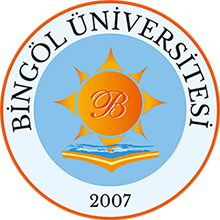Damlatma ve Spin Coating Yöntemi ile Elde Edilen Au/Pd/Borik Asit/Metil Kırmızısı/n-Si/Al/Ag Yapıdaki Schottky Tipi Güneş Pillerinin I-V Karakteristikleri
Abstract
ÖZET:
Bu çalışmada suda çözünen borik asit ve kloroform çözücüsünde çözünen metil kırmızısı ile birinin yüzeyi nano piramitleştirme için tahrip edilmiş iki numunenin arayüzeyi oluşturulmuştur. Au/Pd/Borik Asit/Metil Kırmızısı/Al/Ag yapıdaki iki numuneden yüzeyi pürüzsüz olana damlatma yöntemi ile, yüzeyi asitle tahrip edilen numuneye de spin coating yöntemi ile kaplama yapılmıştır. Fabrikasyonu tamamlanan cihazların; 300 K sıcaklığında, karanlık ortamda, 30 mW /cm², 60 mW /cm² ve 100 mW /cm² ışık şiddetlerinde ölçümleri alınmıştır. Diyot ve güneş pili parametreleri bu ölçümler ile elde edilen bilgiler ile hesaplanmış ve tablolar halinde çıkarılmıştır. Genel olarak 3 numunede diyot ve güneş pili özelliği göstermiştir. Elde edilen sonuçlara göre engel yüksekliği ve fill faktörü paralel değişim göstermiştir. Verim değeri ışık arttıkça genel olarak düşmüş, bu da aryüzeyin ışık geçirgenliğini düşürmesi olarak düşünülmüştür. Tüm numunelerde ışık arttıkça akım değeri de artmış ve gerilim üretmeye başlamıştır. ABSTRACT:
In this study, the interfaces of two samples were formed using water-soluble boric acid and methyl red dissolved in chloroform solvent, with one of the sample surfaces being damaged for nano-pyramidal structuring. Coatings were applied to the smooth-surfaced sample using the drop-casting method, while the acid-etched sample was coated using the spin-coating method. Measurements of the fabricated devices were performed in a dark environment at 300 K and under light intensities of 30 mW/cm², 60 mW/cm², and 100 mW/cm². Diode and solar cell parameters were calculated based on the data obtained from these measurements and were presented in tables. Overall, all three samples exhibited diode and solar cell characteristics. According to the results, the barrier height and fill factor showed parallel variations. The efficiency value generally decreased with increasing light intensity, which was attributed to the reduced light transmittance of the interface. In all samples, as the light intensity increased, the current value also increased, and voltage generation was observed.
Collections

DSpace@BİNGÖL by Bingöl University Institutional Repository is licensed under a Creative Commons Attribution-NonCommercial-NoDerivs 4.0 Unported License..













